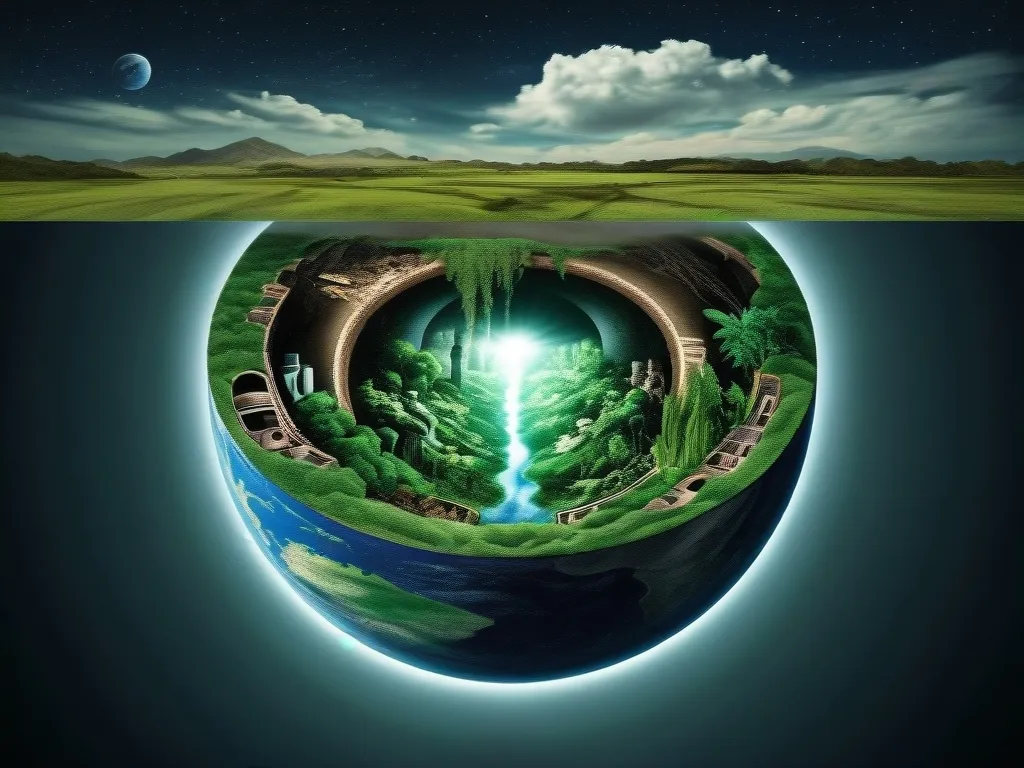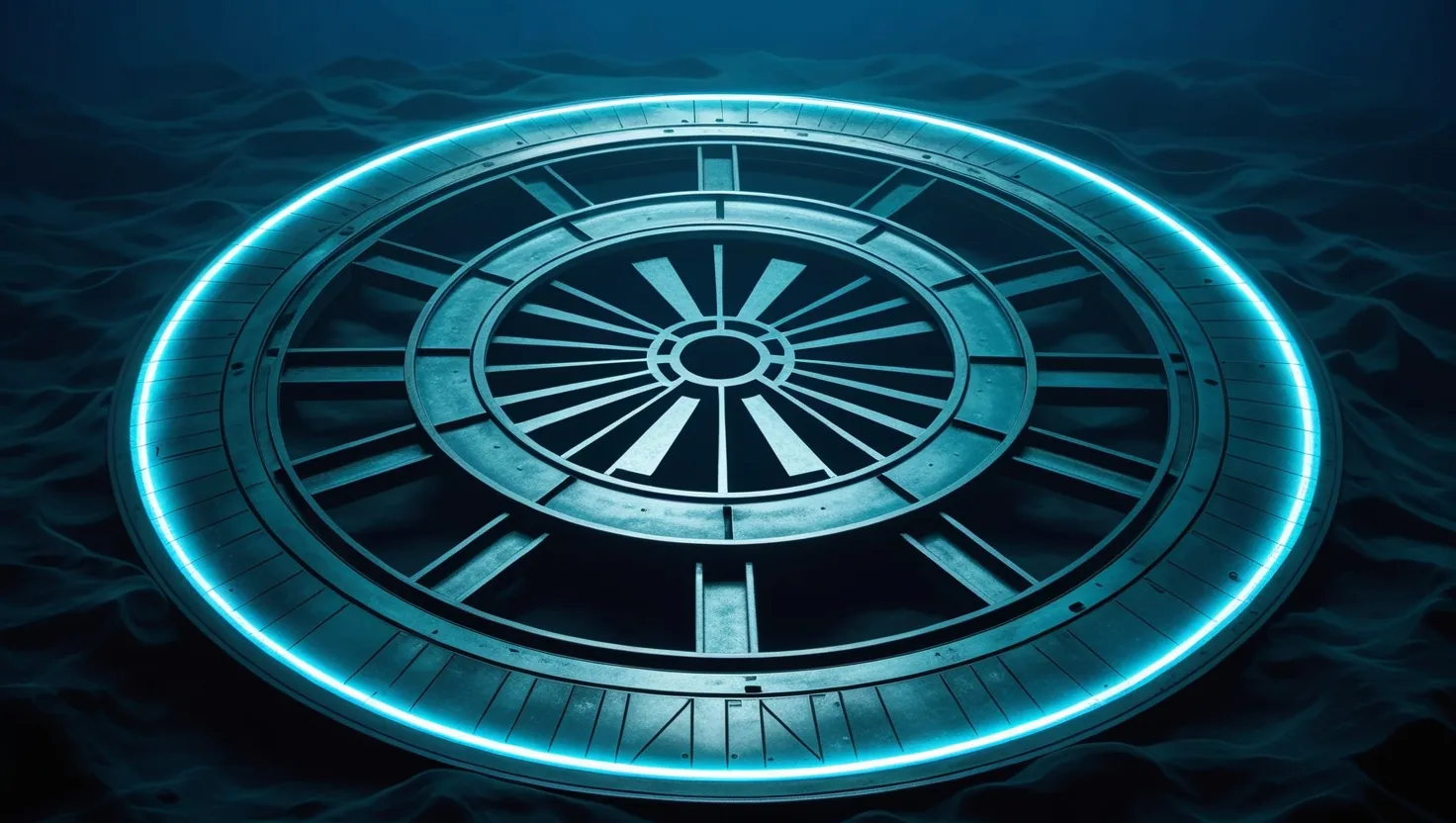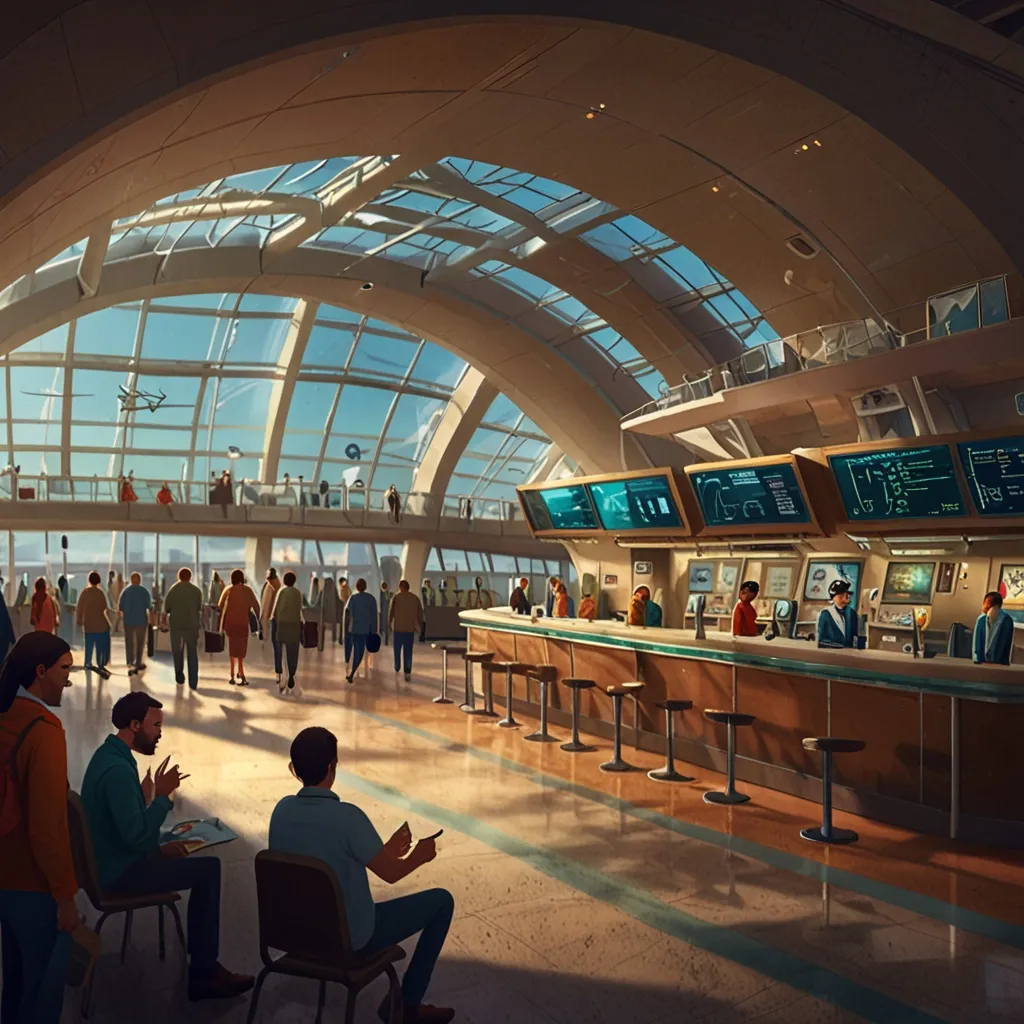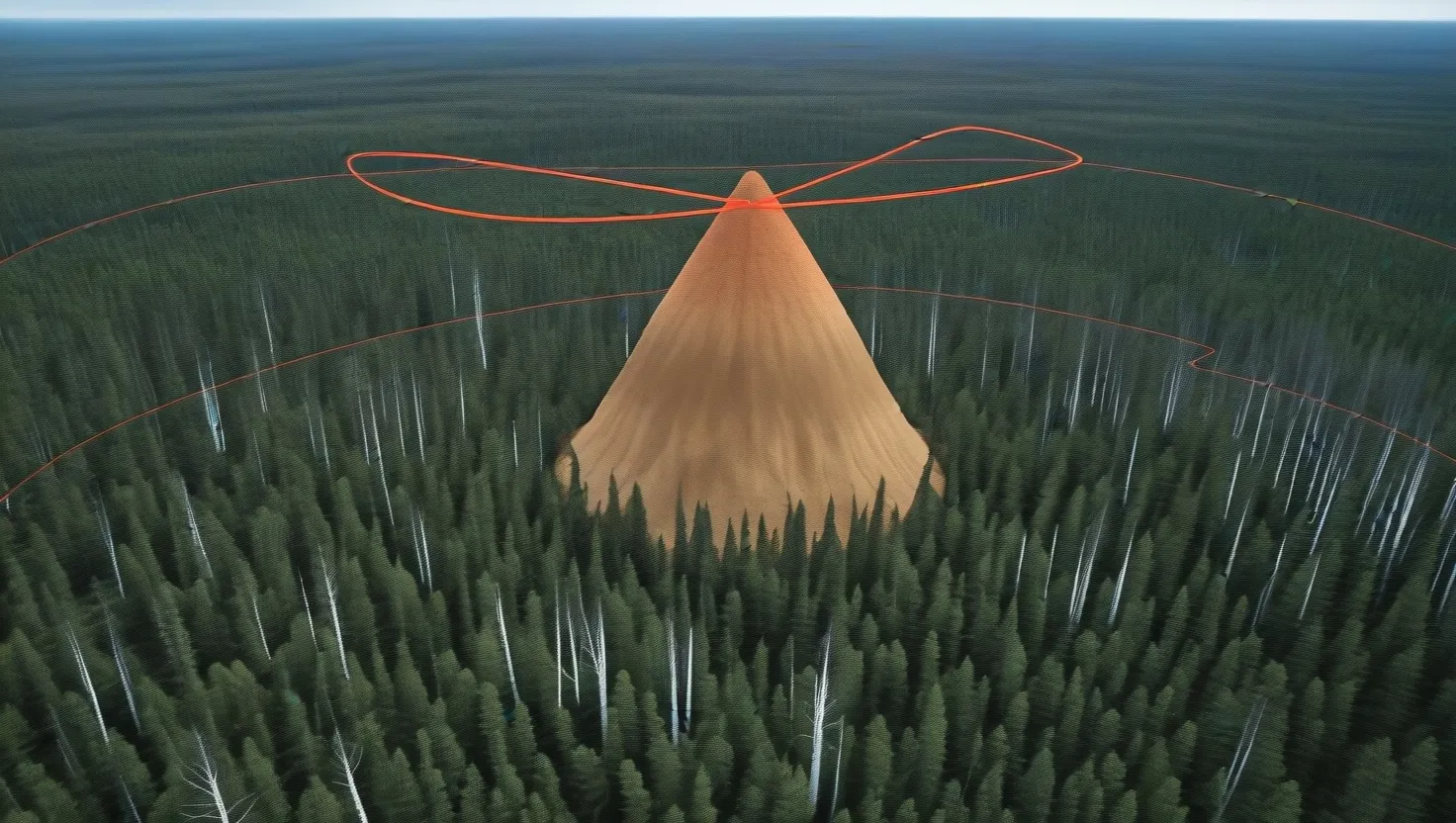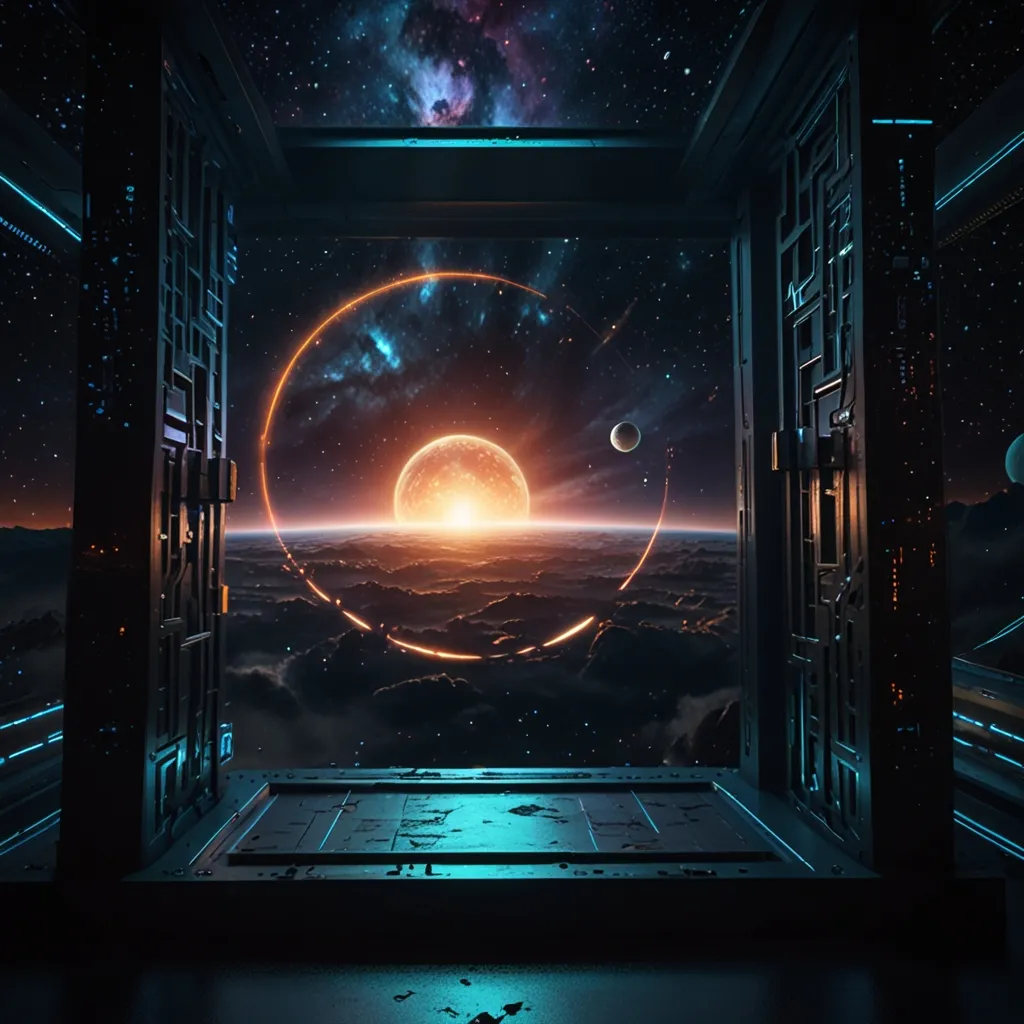As I delve into the intriguing realm of the Hollow Earth theory, I find myself at the crossroads of science, myth, and conspiracy. This idea, which suggests that our planet is either entirely hollow or contains a substantial interior space, has captivated imaginations for centuries. Let’s embark on a journey to explore the depths of this theory, where the lines between geological science and thrilling conspiracy blur.
The concept of a hollow Earth is not a modern invention; it has roots in ancient mythologies and folklore. One of the earliest recorded speculations about the Earth’s internal structure came from Athanasius Kircher in his 1665 work, which described an intricate system of cavities and channels connecting the poles. This idea was later expanded upon by Edmond Halley, the famous astronomer who also predicted the return of Halley’s Comet. In 1692, Halley proposed that the Earth might consist of a hollow shell with several inner concentric shells and an innermost core, each with its own magnetic poles and atmospheres. He even speculated that the interior could be luminous and inhabited, explaining the Aurora Borealis as escaping gas from the inner shells.
The 19th century saw a significant surge in the popularity of the Hollow Earth theory, particularly through the efforts of John Cleves Symmes Jr. Symmes was a war veteran from Ohio who launched a national campaign to explore the “holes at the poles” with a pamphlet published in 1818. He believed the Earth was hollow, with openings at the North and South Poles, and envisioned a world inside teeming with lush vegetation, animals, and possibly even human civilizations. Symmes’s theory was so compelling that it attracted a loyal following, including James McBride, who published a serious-minded manifesto to legitimize Symmes’s cause.
One of the most fascinating aspects of the Hollow Earth theory is its intersection with literature and popular culture. Edgar Allan Poe, for instance, was deeply influenced by this idea. In his 1838 novel, “The Narrative of Arthur Gordon Pym of Nantucket,” Poe describes a journey to the South Pole where the protagonist encounters an open sea and eventually reaches the edge of a Symmesian polar opening. This narrative not only reflects Poe’s fascination with extreme polar exploration but also highlights the enduring appeal of the Hollow Earth theory in the Victorian imagination.
The theory also found its way into the works of other notable figures. Leonhard Euler, a gifted mathematician, proposed a version of the Hollow Earth theory with no concentric shells but with thinned poles that served as entrances to the inner core. He imagined advanced civilizations living inside the planet, illuminated by a small sun at the center. While Euler’s idea was more of a thought experiment, it contributed to the rich tapestry of speculations surrounding the Earth’s internal structure.
In the 20th century, the Hollow Earth theory continued to evolve, albeit on the fringes of mainstream science. William Reed’s “Phantom of the Poles” (1906) and Walburga, Lady Paget’s “Colloquies with an unseen friend” (1907) are examples of how this idea persisted in various forms. Reed supported the concept of a hollow Earth without the inner shells or sun, while Lady Paget speculated about cities beneath the desert, where the people of Atlantis might have moved.
One of the most intriguing modern twists on the Hollow Earth theory involves the alleged expeditions and discoveries of Admiral Richard Byrd. Byrd, a famous polar explorer, reportedly flew over the North Pole in 1947 and recorded flying over lush green areas that should not have existed. His private journal allegedly mentioned a mysterious land beyond the North Pole, which he called the “center of the great unknown.” While these claims are often shrouded in mystery and controversy, they add to the allure of the Hollow Earth theory.
The idea of ancient tunnels and secret societies guarding hidden realms beneath the Earth’s surface is another layer of the Hollow Earth narrative. Some believe that these tunnels connect various points on Earth, forming a network of subterranean pathways that have been hidden from the general public. This notion is often linked to myths about lost civilizations and underground cities, such as the supposed entrance to the hollow Earth in the Alaska Range, which some claim is an entry and exit point for flying saucers.
Despite the captivating nature of these theories, mainstream science has long since dismissed the idea of a hollow Earth. The Schiehallion experiment by Charles Hutton in the late 18th century and subsequent geological studies have provided overwhelming evidence against the hollow Earth hypothesis. However, this has not deterred conspiracy enthusiasts who argue that such evidence is suppressed or that secret societies have confirmed the existence of vast inner realms.
As I reflect on the Hollow Earth theory, I am struck by its enduring appeal. It is a testament to human curiosity and the desire to uncover hidden truths. Whether seen as a scientific hypothesis, a literary trope, or a conspiracy theory, the idea of a hollow Earth continues to inspire imagination and spark debate.
In the end, the question remains: is there more beneath the surface than we’ve been led to believe? While science may have its answers, the allure of the unknown and the thrill of speculation will likely keep the Hollow Earth theory alive in the realms of myth and conspiracy. As we continue to explore and understand our planet, it is fascinating to consider what might lie just beyond the reach of our current knowledge, hidden beneath our feet, waiting to be unveiled.
